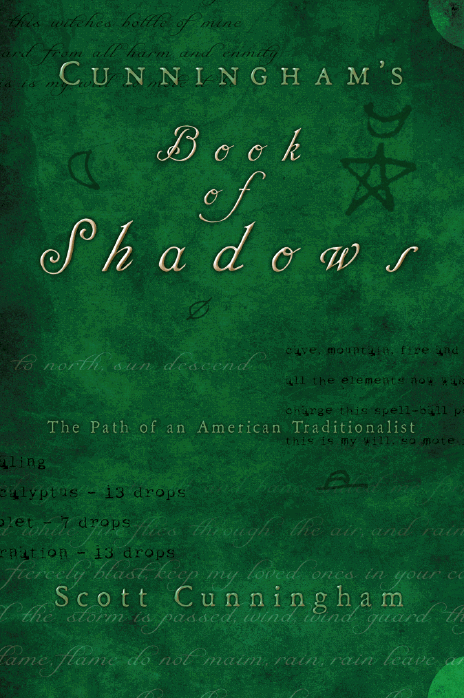 About This Book The basis for this Book of Shadows is an unfinished manuscript Scott Cunningham started more than thirty years ago. The way it was placed in an envelope with the title shows us Scott intended it to be published. We believe it would be a disservice to publish it in the raw, and for that reason we have excerpted passages from Scotts previously published books to serve as introductions to sections or to create bridges where material was not completed. The primary resource was Wicca: A Guide for the Solitary Practitioner , and those passages are noted for clarity. None of Scotts original words were changed for this book. The original manuscript was produced on a red IBM Selectric typewriter, and many of those pages have been reproduced exactly as they were created, including Scotts handwritten notes and corrections in the margins.
About This Book The basis for this Book of Shadows is an unfinished manuscript Scott Cunningham started more than thirty years ago. The way it was placed in an envelope with the title shows us Scott intended it to be published. We believe it would be a disservice to publish it in the raw, and for that reason we have excerpted passages from Scotts previously published books to serve as introductions to sections or to create bridges where material was not completed. The primary resource was Wicca: A Guide for the Solitary Practitioner , and those passages are noted for clarity. None of Scotts original words were changed for this book. The original manuscript was produced on a red IBM Selectric typewriter, and many of those pages have been reproduced exactly as they were created, including Scotts handwritten notes and corrections in the margins.
Also, many of the hand-drawn symbols and related artwork have been reproduced just as he drew them. This is not a traditional Book of Shadows because Scott intended to create something truly unique. The genesis of that idea and the content of the book is explained in the How to Use This Book section written by Scotts publisher, Carl Llewellyn Weschcke. The appendices contain memories of Scott from some of his siblings, teachers, and closest friends.  Scott Cunningham Scott Cunningham learned about Wicca while still in high school, and practiced elemental magic for over twenty years. He was the author of more than forty books, both fiction and non-fiction, sixteen of them published by Llewellyn Publications.
Scott Cunningham Scott Cunningham learned about Wicca while still in high school, and practiced elemental magic for over twenty years. He was the author of more than forty books, both fiction and non-fiction, sixteen of them published by Llewellyn Publications.
He experienced, researched, then wrote about what he learned in his magical training. Scotts books reflect a broad range of interests within the New Age sphere, where he was highly regarded. He passed from this life on March 28, 1993, after a long illness. 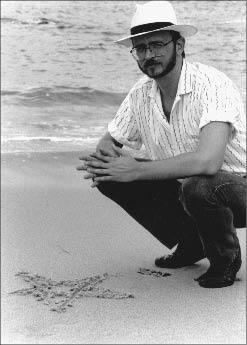 Linda Mace Pirkle Photography
Linda Mace Pirkle Photography 
 Llewellyn Publications Woodbury, Minnesota Cunninghams Book of Shadows: The Path of An American Traditionalist 2009 by Scott Cunningham. All rights reserved. No part of this book may be used or reproduced in any matter whatsoever, including Internet usage, without written permission from Llewellyn Publications, except in the form of brief quotations embodied in critical articles and reviews.
Llewellyn Publications Woodbury, Minnesota Cunninghams Book of Shadows: The Path of An American Traditionalist 2009 by Scott Cunningham. All rights reserved. No part of this book may be used or reproduced in any matter whatsoever, including Internet usage, without written permission from Llewellyn Publications, except in the form of brief quotations embodied in critical articles and reviews.
As the purchaser of this e-book, you are granted the non-exclusive, non-transferable right to access and read the text of this ebook on screen. The text may not be otherwise reproduced, transmitted, downloaded, or recorded on any other storage device in any form or by any means. Any unauthorized usage of the text without express written permission of the publisher is a violation of the authors copyright and is illegal and punishable by law. First e-book edition 2011 E-book ISBN: 9780738721446 Cover design by Kevin R. Brown Editing by Connie Hill Some of the prayers, chants, and invocations are traditional chants that are in common usage. Among them, the Witches Rune (p 69) is attributed to, among others, Stewart and Janet Farrar ( The Witches Goddess ); the Call to Pan to Dion Fortune; and the Healing Invocation to Isis to an ancient papyrus.
Llewellyn Publications is an imprint of Llewellyn Worldwide Ltd. Llewellyn Publications does not participate in, endorse, or have any authority or responsibility concerning private business arrangements between our authors and the public. Any Internet references contained in this work are current at publication time, but the publisher cannot guarantee that a specific reference will continue or be maintained. Please refer to the publishers website for links to current author websites. Some of the activities described in this book may be dangerous or illegal, but are included here because of their traditional or historical connections to the topics discussed in the book. Readers are urged to exercise responsibility in interpreting or implementing the information contained here.
The publisher does not recommend the use of substances described in the book, nor take any responsibility for actions taken in response to the material herein. Llewellyn Publications Llewellyn Worldwide Ltd. 2143 Wooddale Drive Woodbury, MN 55125 www.llewellyn.com Manufactured in the United States of America Contents by deTraci Regula by Marilee Bigelow by Christine Ashworth by David Harrington 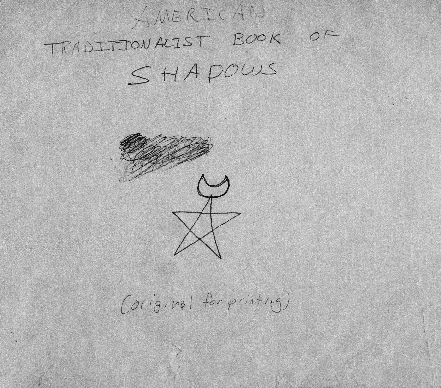 Above is a scan of the battered manila envelope that this manuscript was found in. The Blessing Prayer In the name of Dryghtyn, the Ancient Providence,
Above is a scan of the battered manila envelope that this manuscript was found in. The Blessing Prayer In the name of Dryghtyn, the Ancient Providence,
which was from the beginning and is for eternity
male and female, the original source of all things:
all-knowing, all-pervading, all-powerful, changeless,
eternal; in the names of the Lady of the Moon
and our Lord the Horned One; in the names of the Spirits
of the Stones, rulers of the elemental realms:
Bless this place, and this time, and they who are
with us.* (to be said before every rite, just after building the Circle of Stones) * Scott Cunningham had a second version of this blessing prayer, in which he added deity names: the Lady of the Moon, Diana, and our Lord the Horned One, Kernunnos. HOW TO USE THIS BOOK By Carl Llewellyn Weschcke The book you hold in your hands is neither an ordinary book with its printed pages, nor a Traditionalist Book of Shadows. Before I explain what the difference is and how to use this book, I want to tell you a few things relating to the author that may help your understanding.
The manuscript for this book had been lost among boxes of Scott Cunninghams writings since his death in 1993. His original proposed title was American Traditionalist Book of Shadows. Due to events over the last quarter century, we felt that the word Traditionalist was no longer appropriate philosophically in association with the subject of Wicca. Make no mistake, Scott Cunningham considered himself a Traditionalist in the original concept of that word: A deep respect for tradition, especially for cultural or religious practice . But our dictionary also offers an alternative definition: The idea that all knowledge comes from divine revelation and is passed on by tradition . It is this latter definition that gives us some difficulty.
Wicca is not revealed knowledge stemming from a single source that becomes established as theologically sacrosanct, but is instead a living tradition that is personally experienced and integrated into your life. Wicca does not have a fixed theology administered and taught by a Council of Elders similar to historic authoritarian religions. There are a number of Wiccan churches established to administer to the needs of their membership for such purposes as marriage, funerals, personal counseling, etc., and there are many small covens bringing people together, but most practitioners of Wicca are solitaries who see themselves not separated from others by belief and lifestyle but fully integrated into the larger community while finding their spiritual strength from within. It was mostly for these individuals that Scott wrote his books. 
Next page

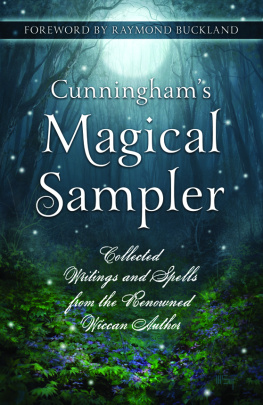





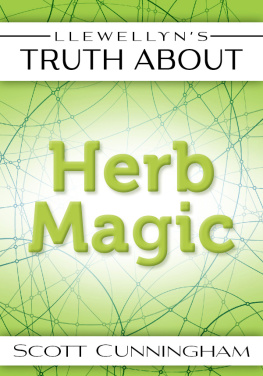

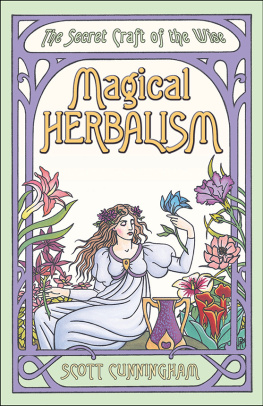
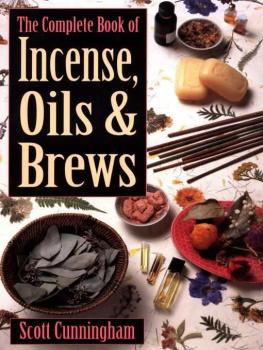
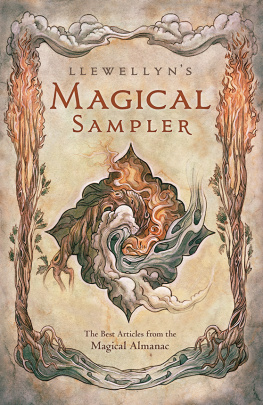

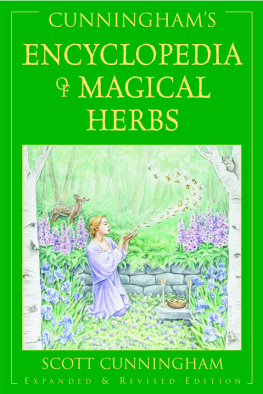
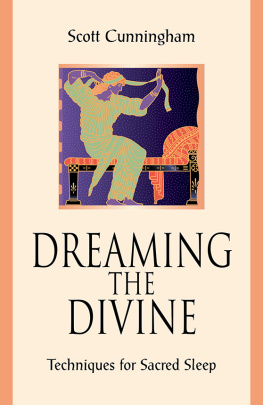
 About This Book The basis for this Book of Shadows is an unfinished manuscript Scott Cunningham started more than thirty years ago. The way it was placed in an envelope with the title shows us Scott intended it to be published. We believe it would be a disservice to publish it in the raw, and for that reason we have excerpted passages from Scotts previously published books to serve as introductions to sections or to create bridges where material was not completed. The primary resource was Wicca: A Guide for the Solitary Practitioner , and those passages are noted for clarity. None of Scotts original words were changed for this book. The original manuscript was produced on a red IBM Selectric typewriter, and many of those pages have been reproduced exactly as they were created, including Scotts handwritten notes and corrections in the margins.
About This Book The basis for this Book of Shadows is an unfinished manuscript Scott Cunningham started more than thirty years ago. The way it was placed in an envelope with the title shows us Scott intended it to be published. We believe it would be a disservice to publish it in the raw, and for that reason we have excerpted passages from Scotts previously published books to serve as introductions to sections or to create bridges where material was not completed. The primary resource was Wicca: A Guide for the Solitary Practitioner , and those passages are noted for clarity. None of Scotts original words were changed for this book. The original manuscript was produced on a red IBM Selectric typewriter, and many of those pages have been reproduced exactly as they were created, including Scotts handwritten notes and corrections in the margins. Scott Cunningham Scott Cunningham learned about Wicca while still in high school, and practiced elemental magic for over twenty years. He was the author of more than forty books, both fiction and non-fiction, sixteen of them published by Llewellyn Publications.
Scott Cunningham Scott Cunningham learned about Wicca while still in high school, and practiced elemental magic for over twenty years. He was the author of more than forty books, both fiction and non-fiction, sixteen of them published by Llewellyn Publications. Linda Mace Pirkle Photography
Linda Mace Pirkle Photography 
 Llewellyn Publications Woodbury, Minnesota Cunninghams Book of Shadows: The Path of An American Traditionalist 2009 by Scott Cunningham. All rights reserved. No part of this book may be used or reproduced in any matter whatsoever, including Internet usage, without written permission from Llewellyn Publications, except in the form of brief quotations embodied in critical articles and reviews.
Llewellyn Publications Woodbury, Minnesota Cunninghams Book of Shadows: The Path of An American Traditionalist 2009 by Scott Cunningham. All rights reserved. No part of this book may be used or reproduced in any matter whatsoever, including Internet usage, without written permission from Llewellyn Publications, except in the form of brief quotations embodied in critical articles and reviews. Above is a scan of the battered manila envelope that this manuscript was found in. The Blessing Prayer In the name of Dryghtyn, the Ancient Providence,
Above is a scan of the battered manila envelope that this manuscript was found in. The Blessing Prayer In the name of Dryghtyn, the Ancient Providence,